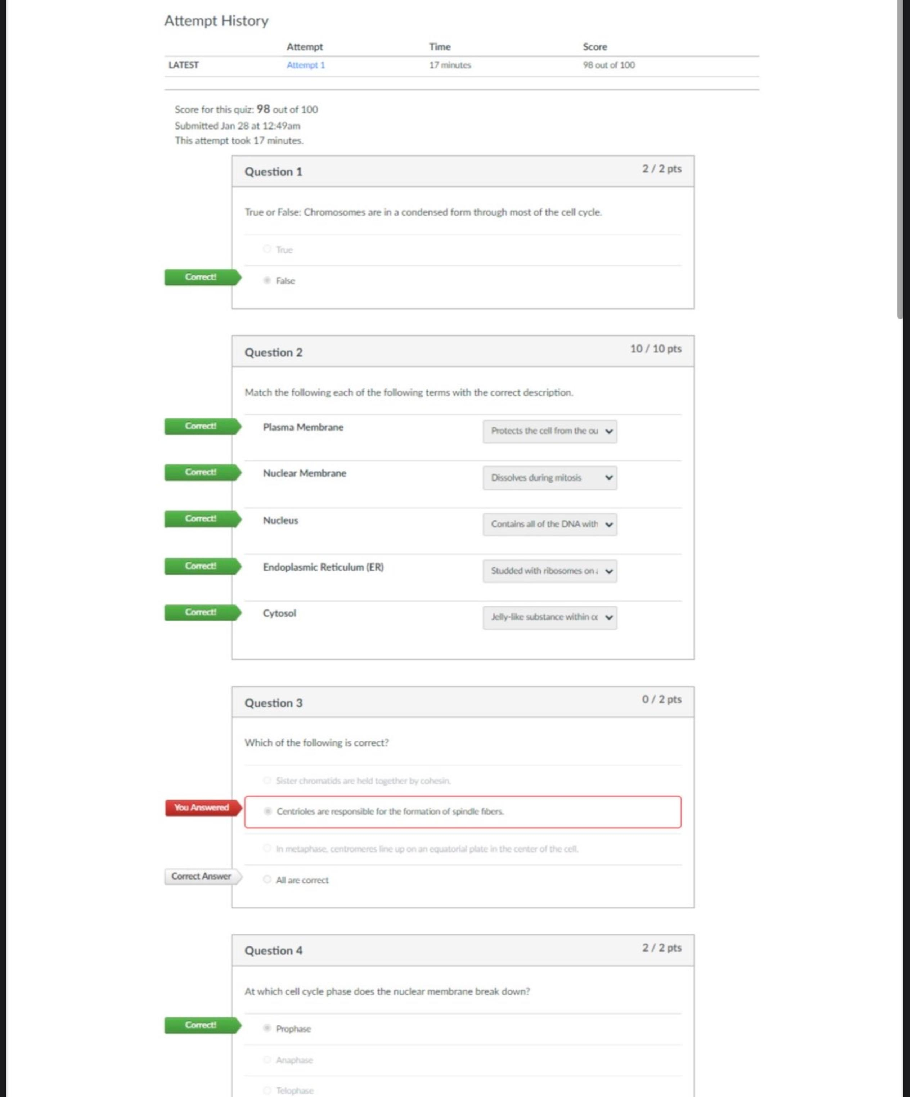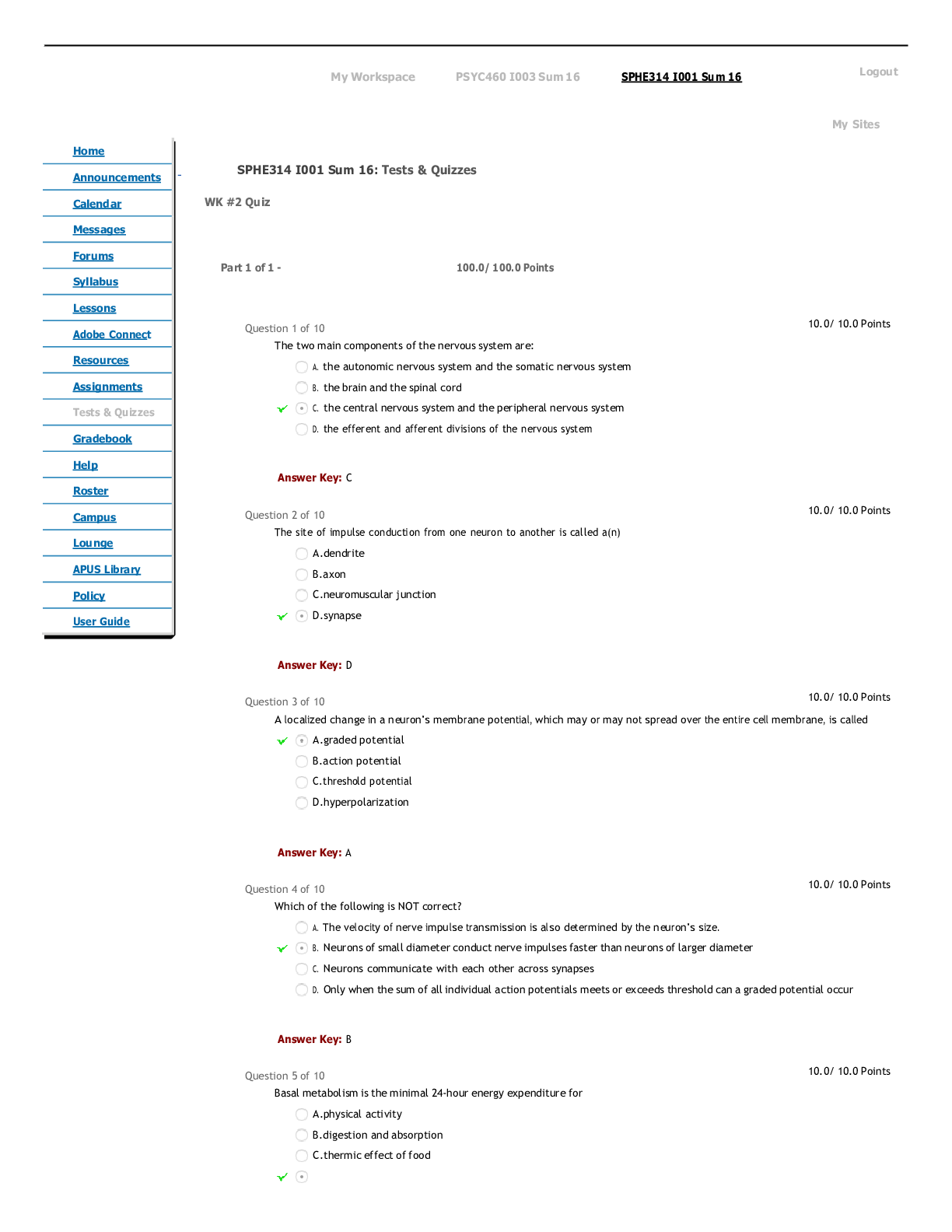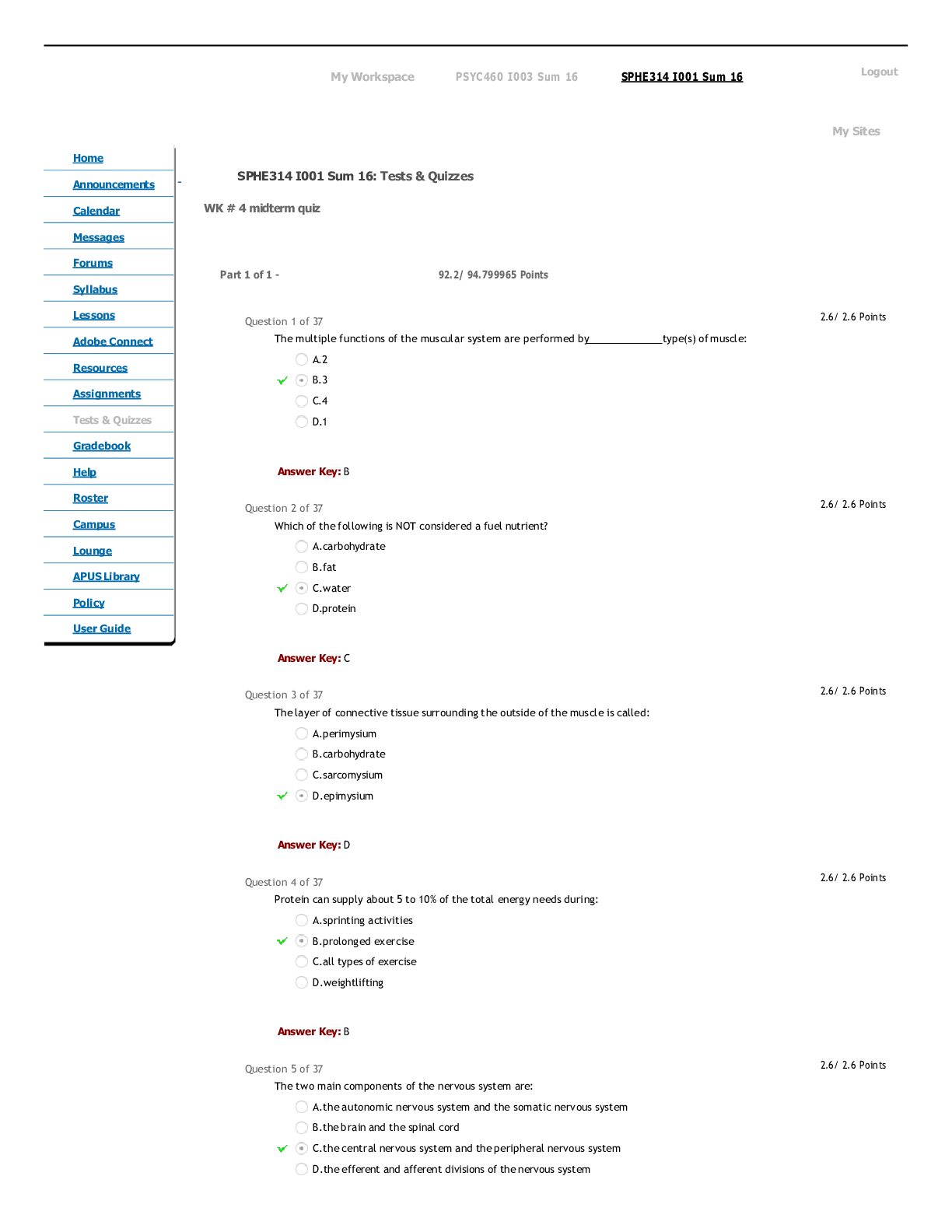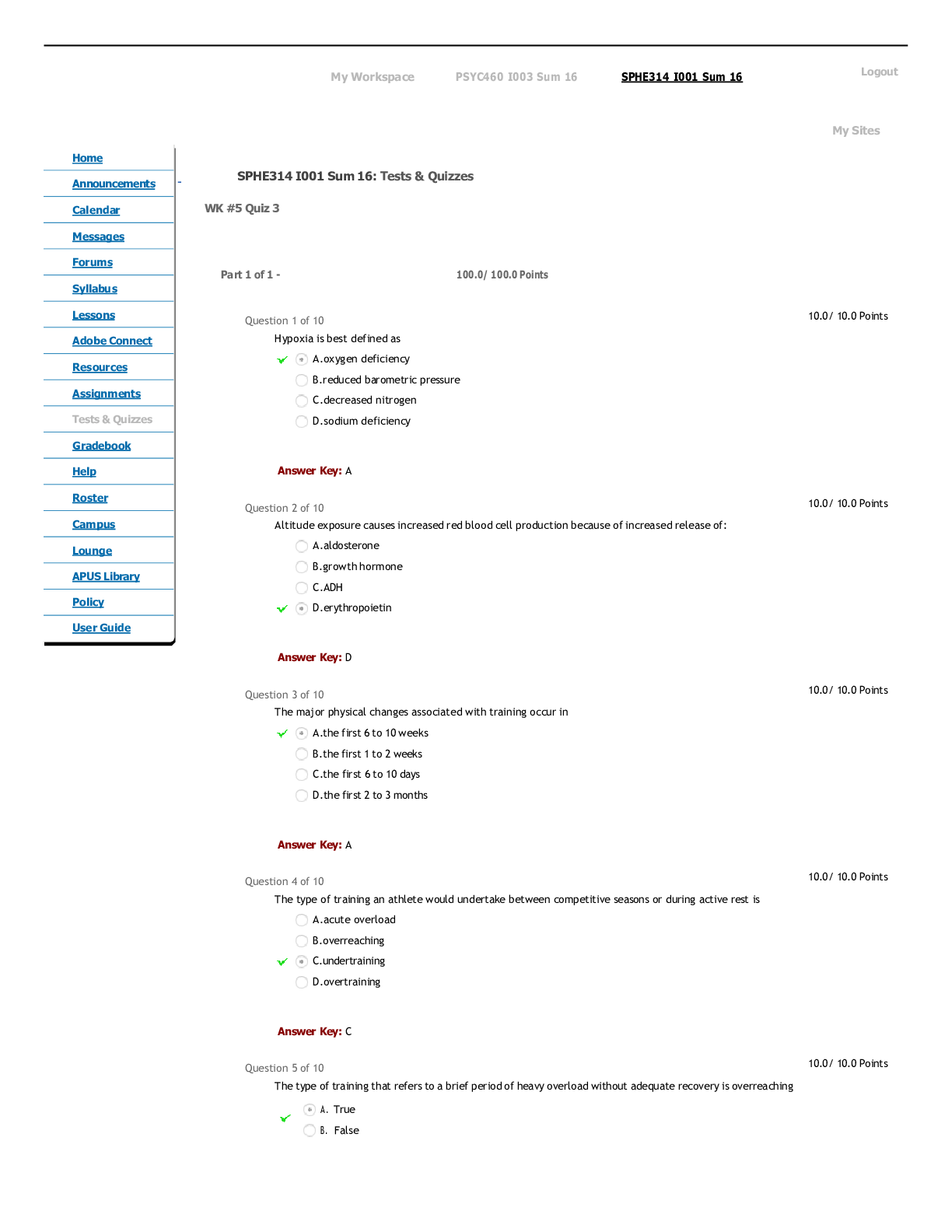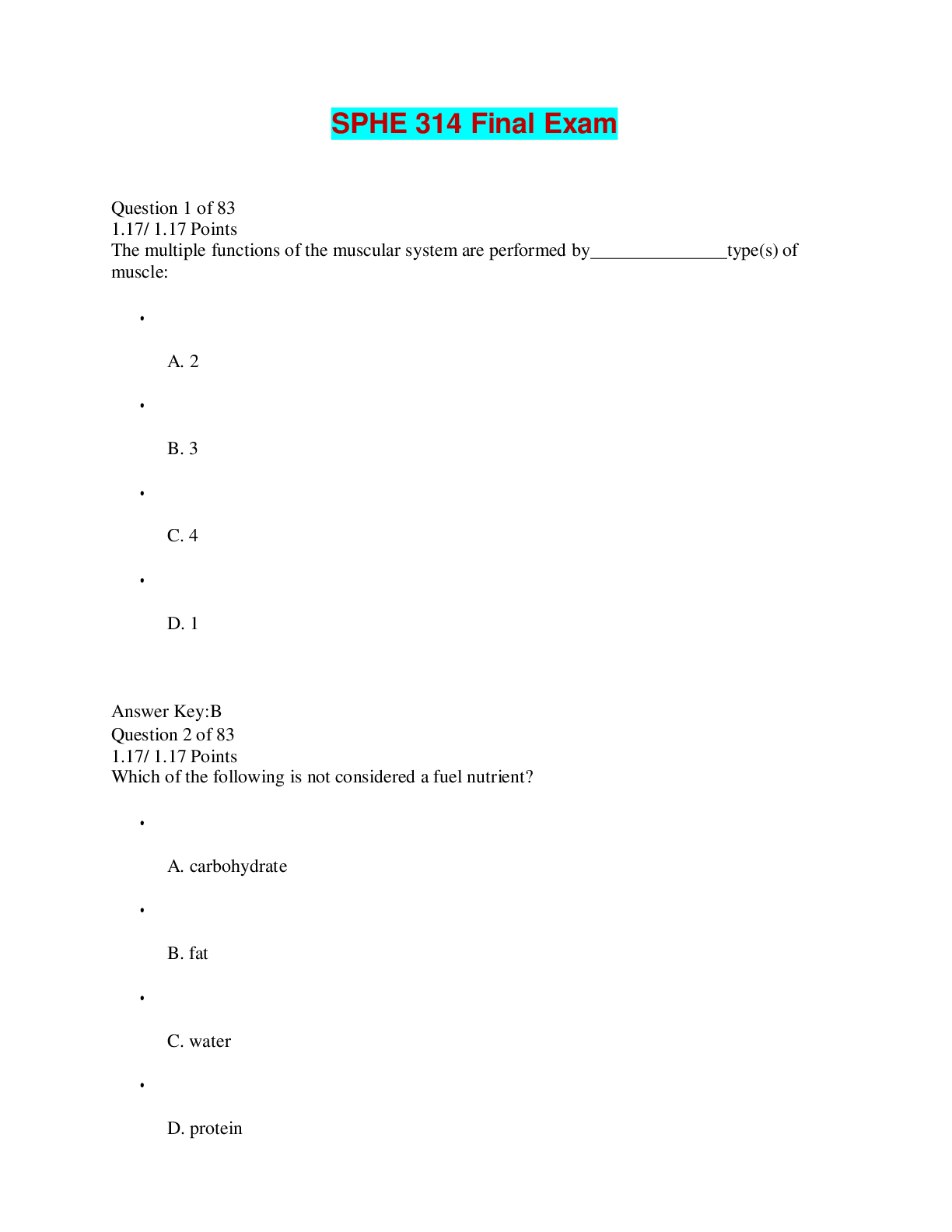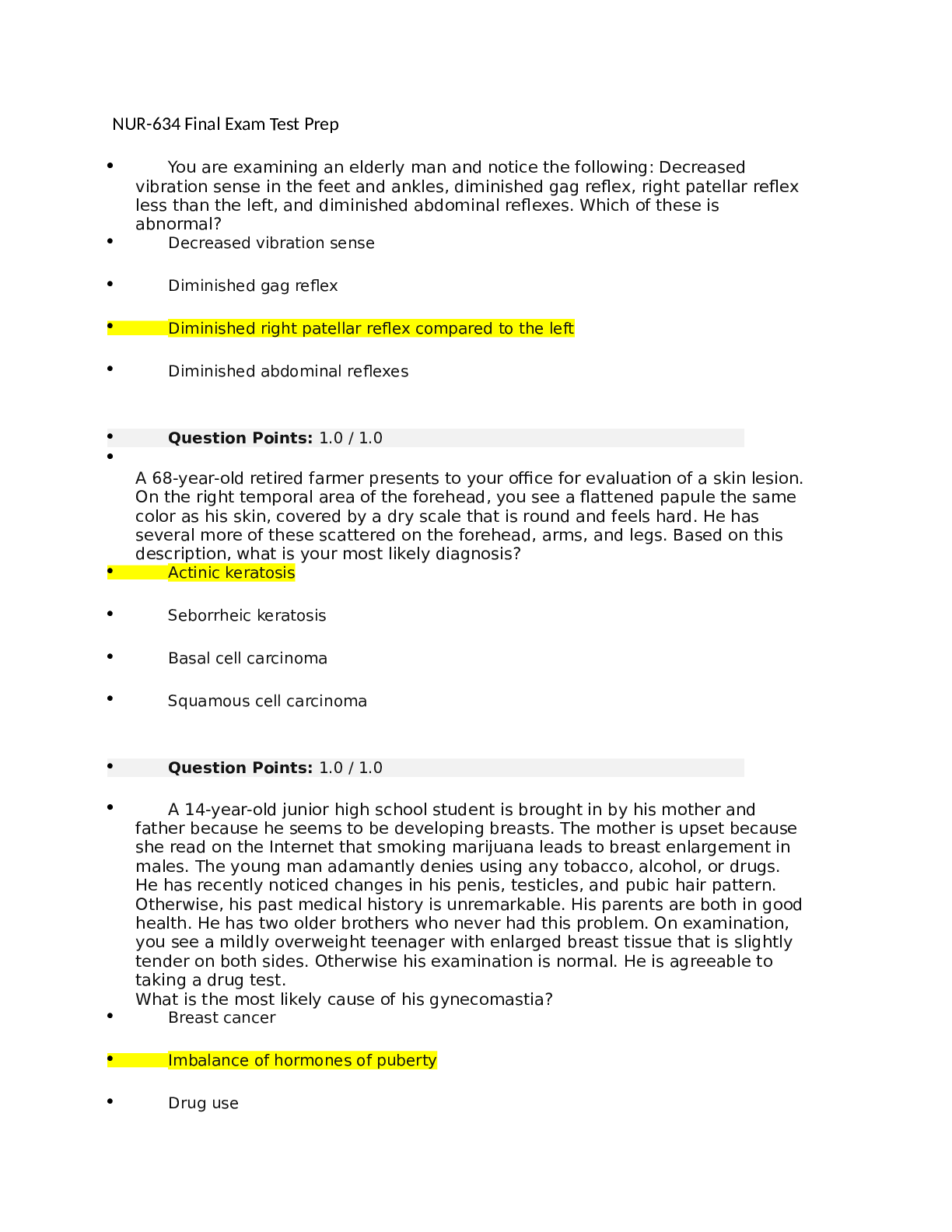Social Sciences > EXAM > AC-HPAT Prep | Biology, Chemistry, Physics, Math (Complete Solutions) (All)
AC-HPAT Prep | Biology, Chemistry, Physics, Math (Complete Solutions)
Document Content and Description Below
AC-HPAT Prep | Biology, Chemistry, Physics, Math (Complete Solutions) Most of the cell membrane's specific functions are controlled by: Proteins Alcoholic Fermentation is a form of: Anaerobic Respir... ation Phagocytosis is a form of: Endocytosis What is a pyruvate? Pyruvate is an important chemical compound in biochemistry. It is the output of the metabolism of glucose known as glycolysis. One molecule of glucose breaks down into two molecules of pyruvate, which are then used to provide further energy, in one of two ways. What are the small spherical bodies within a cell where proteins are assembled according to genetic instructions? Ribosomes What is the structural and functional unit of life? The cell What is a prokaryotic cell? A cell that lacks a true nucleus and membrane-bound organelles What is a eukaryotic cell? A cell that contains a nucleus and membrane-bound organelles What is cellular respiration? A catabolic pathway for the production of ATP, in which sometimes oxygen is consumed as a reactant along with an organic fuel. At times, the process proceeds without oxygen, but this is less efficient. What is anaerobic respiration? A form of cellular respiration that does not involve oxygen. What is aerobic respiration? Form of cellular respiration which requires oxygen to generate energy. Name the four types of transport that allow small molecules to move across the cell membrane: Diffusion, Osmosis, Active Transport, and Passive Transport. Prokaryotes often reproduce by: Binary Fission What is binary fission? A form of asexual reproduction in which the parent divides into two identical halves. What is cytokinesis? The division of cytoplasm into two identical daughter cells, which occurs during the telophase stage of mitosis. What is a haploid cell? A cell that contains one set of chromosomes What is a diploid cell? A cell that contains two sets of chromosomes What is chromatin? The substance of which eukaryotic chromosomes are composed, consisting of mostly proteins, DNA, and RNA. What is a centriole? a cylindrical organelle near the nucleus in animal cells, occurring in pairs and involved in the development of spindle fibers in cell division. What is a chromosome? A structure carrying genes is a linear sequence, found in the nucleus, consisting of DNA and protein. What is DNA? A double-stranded, helical nucleic acid molecule capable of replicating and determining the inherited structure of a cell's proteins. It makes up the genetic material of most living organisms and plays a role in determining heredity. What is RNA? A single-stranded nucleic acid molecule involved in protein synthesis. It is responsible for carrying the genetic code transcribed for DNA to specialized sites within the cell where the information is translated into protein composition. What is a nucleotide? A nucleotide is the basic building block of nucleic acids. RNA and DNA are polymers made of long chains of nucleotides. A nucleotide consists of a sugar molecule (either ribose in RNA or deoxyribose in DNA) attached to a phosphate group and a nitrogen-containing base. What is transcription? Transcription is the process by which the information in a strand of DNA is copied into a new molecule of messenger RNA (mRNA). ... This complex initiates transcription, and the RNA polymerase begins mRNA synthesis by matching complementary bases to the original DNA strand. What is translation? Translation is the process by which a protein is synthesized from the information contained in a molecule of messenger RNA (mRNA). Translation occurs in a structure called the ribosome, which is a factory for the synthesis of proteins What is endocytosis and exocytosis? Endocytosis is the process of capturing a substance or particle from outside the cell by engulfing it with the cell membrane, and bringing it into the cell. Exocytosis describes the process of vesicles fusing with the plasma membrane and releasing their contents to the outside of the cell What is a chromotid? Each of the two threadlike strands into which a chromosome divides longitudinally during cell division. Each contains a double helix of DNA. What is an allele? An alternative version of a gene; one from each parent. What is a phenotype? An organism's physical appearance, or visible traits. What is a genotype? An organism's genetic makeup. When a red snapdragon is crossed with a white one, all the F1 hybrids have pink flowers. This is an example of: Incomplete dominance Traits that are alternatives to the wild type (for example, white eyes in a fruit fly as opposed to the usual red) are called: Mutant phenotypes Lethal recessive mutations are perpetuated by the reproduction of carriers with normal: Phenotypes What is the function of the circulatory system? To distribute blood and associated chemicals through the body. What is the function of the respiratory system? To take in oxygen and eliminate carbon dioxide. [Show More]
Last updated: 1 year ago
Preview 1 out of 16 pages
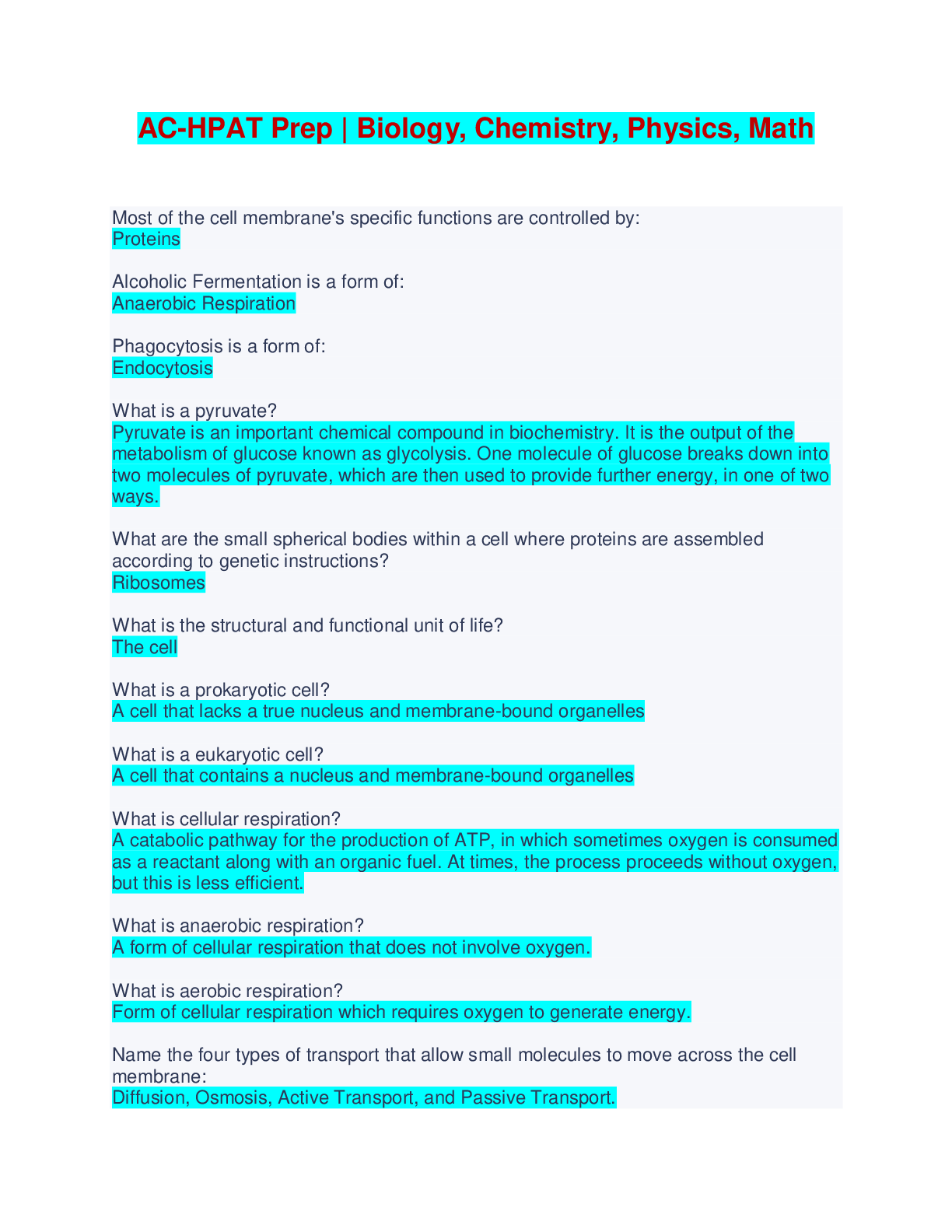
Buy this document to get the full access instantly
Instant Download Access after purchase
Buy NowInstant download
We Accept:

Reviews( 0 )
$13.00
Can't find what you want? Try our AI powered Search
Document information
Connected school, study & course
About the document
Uploaded On
Jan 12, 2024
Number of pages
16
Written in
Additional information
This document has been written for:
Uploaded
Jan 12, 2024
Downloads
0
Views
31

